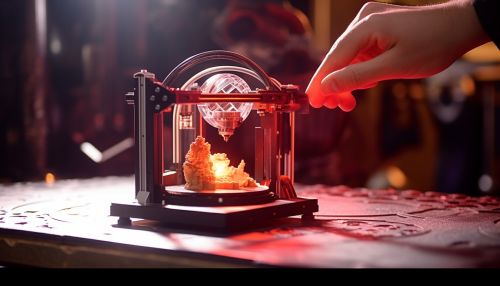3D Printing Technologies
Introduction
3D printing, also known as Additive Manufacturing, is a process of creating three-dimensional solid objects from a digital file. The creation of a 3D printed object is achieved using additive processes, where an object is created by laying down successive layers of material until the object is complete. Each of these layers can be seen as a thinly sliced horizontal cross-section of the eventual object.
History of 3D Printing
The history of 3D printing dates back to the 1980s. The first patent for the stereolithography apparatus (SLA) was filed by Chuck Hull in 1984. Hull's patent described a system for generating three-dimensional objects by creating a cross-sectional pattern of the object to be formed.


Types of 3D Printing Technologies
There are several types of 3D printing technologies, including Stereolithography (SLA), Digital Light Processing (DLP), Fused deposition modeling (FDM), Selective Laser Sintering (SLS), and Selective laser melting (SLM).
Stereolithography (SLA)
Stereolithography is one of the most popular methods of 3D printing. It works by using a high-powered laser to harden liquid resin that is contained in a reservoir to create the desired 3D shape.
Digital Light Processing (DLP)
Digital Light Processing (DLP) is similar to SLA but uses a more conventional light source. DLP 3D printing is faster than SLA as it exposes entire layers at once, allowing for quicker build times.
Fused Deposition Modeling (FDM)
Fused Deposition Modeling (FDM) is a 3D printing process where a plastic filament is melted and extruded through a nozzle that moves along the x, y, and z axes to build an object layer by layer from the bottom up.
Selective Laser Sintering (SLS)
Selective Laser Sintering (SLS) uses a laser to sinter powdered material, binding it together to create a solid structure. Unlike SLA and DLP, SLS does not require support structures because the powder acts as self-supporting material.
Selective Laser Melting (SLM)
Selective Laser Melting (SLM) is a method that also uses a high-power laser beam to fuse and melt metallic powders together.
Applications of 3D Printing
3D printing technology has a wide range of applications in various fields. These include:
Medicine
In medicine, 3D printing is used to create implants and prosthetics, custom-fitted medical devices, and to produce realistic anatomical models for surgical preparation.
Manufacturing
In manufacturing, 3D printing is used for rapid prototyping, mass customization, and producing complex shapes and structures that would be difficult or impossible to achieve with traditional manufacturing methods.
Construction
In construction, 3D printing can be used to create complex architectural designs and even entire buildings.
Art and Design
In art and design, 3D printing allows artists and designers to create complex shapes and designs that would be difficult or impossible to achieve with traditional methods.
Future of 3D Printing
The future of 3D printing holds immense potential. With advancements in technology, we can expect to see more widespread use of 3D printing in various sectors, including healthcare, manufacturing, construction, and more. There is also the potential for the development of new materials for 3D printing, including advanced polymers, metals, and ceramics.
